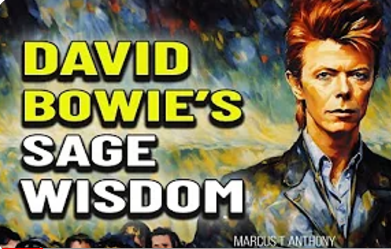We cannot look at the absence of integrated intelligence (the marriage of intellect and intuition) in modern discourses, in theory or praxis, without noticing that the way we humans perceive the world has changed dramatically in recent times. An indigenous shaman was likely to have spent thousands of hours in an altered state of consciousness, often induced by sacred herbs. Buddhist monks in Tibet spent years meditating in silence. Hunters and gatherers would have spent their entire lives dealing directly with nature. The “weather” for them was not a talking head stuck inside an electronic box, standing before an abstract map. The weather was a direct experience of the wind, the rain and the sunshine which fell upon their faces.
Today most people cannot name their great grandparents, and probably could not name a single fact about any of those eight human beings who lived but three lifetimes ago. Yet for traditional cultures, the ancestors lived on within their psyches, such as in the dreamtime of the Australian Aborigines. They trusted in their senses, and often in their dreams and intuitions. They had little choice. For many of our ancestors in pre-industrial societies, integrated intelligence was a very necessary and a very real thing.
But as time has gone on, we have become more and more estranged from our physical senses, and from our psyches. Our gaze has turned increasingly outward, our view and worldview evermore mechanized, congruent with our vision’s increasing reliance upon mechanical devices. In his book Seeing and Believing, Richard Panek traces the history of the telescope and how it has impacted human perception and imagination. One passage in the book strikes me as very relevant to where we find ourselves with today’s digital society.
It wasn’t only what the telescope had helped reveal qualitatively – the celestial bodies visible in a variety that until very recently would have been beyond imagination. It wasn’t even what the telescope had helped render quantitatively – the dimensions and distances that approximated the way the universe actually works. Instead what had changed astronomy at least as much as these observations was faith in the telescope itself.[i]
Over time, the process whereby we came to trust in technologies like the telescope has been repeated with other technologies. The traditional telescope was made from two lenses and a tube, but eventually became replaced by the radio telescope (and most recently the magnificent James Web Space Telescope). Here the data is digitally interpreted for us, delivered to us via our screens, even as the actual world around us recedes from our vision.
Research indicates that when we employ our peripheral vision, our sense of presence, awe and wonder increases. We relax, gain a deeper perspective of our place in time and space and our capacity for spatial memory improves. We become more positive about the future and the jigsaw of life begins to piece itself together. Thus, as our gaze habitually collapses outward while peripherally constricting, we may lose touch with the human spirit. This is not necessarily an either/or scenario. Technologies can also inspire awe. Images of nature can also induce many of the effects written about in this paragraph, for example.

This historical process has culminated in the point we have reached today, where for many human beings their understanding of the world is delivered predominantly via the devices that they are squinting into. The spaces where our gaze typically falls are decided not so much by our intuitive sense of our place in nature, or from what is intuited as being of value to the spirit, but increasingly by invisible algorithms, their hidden signals laden with stealthy agendas, seeded by Big Tech. Just as GPS systems in our cars have led to a gradual decay in our spatial awareness and capacity to navigate around a city (without the technology), our ceding perceptual power to the Big Tech robots has come with a loss of faith in the knowing contained within our bodies, within our psyches. Our bodily intuitions, and the deep knowledge of our integrated intelligence, has been replaced by a knowing delivered to us by third-party mediators and their automatons. As the age of the Metaverse dawns upon us, we are in danger of completely ceding our intuitive faculties and sense of embodied presence to the machines and their shadowy masters.
Could the rise of the doomer movement be related to our overuse of digital technologies and dissconnection from our peripheral vision, as well as our inner wisdom?
This is an extract from Marcus T Anthony’s upcoming book, Power and Presence: Reclaiming Your Authentic Self in Digitized World.

[i] Seeing and Believing, Richard Panek, p. 89.





